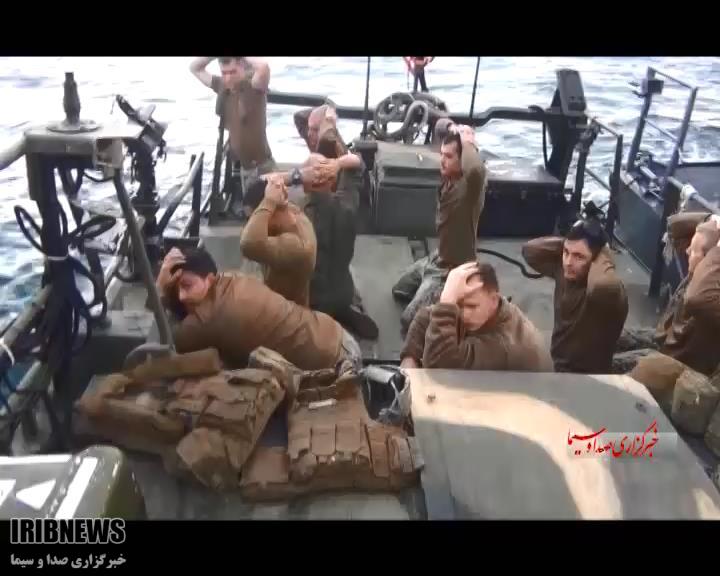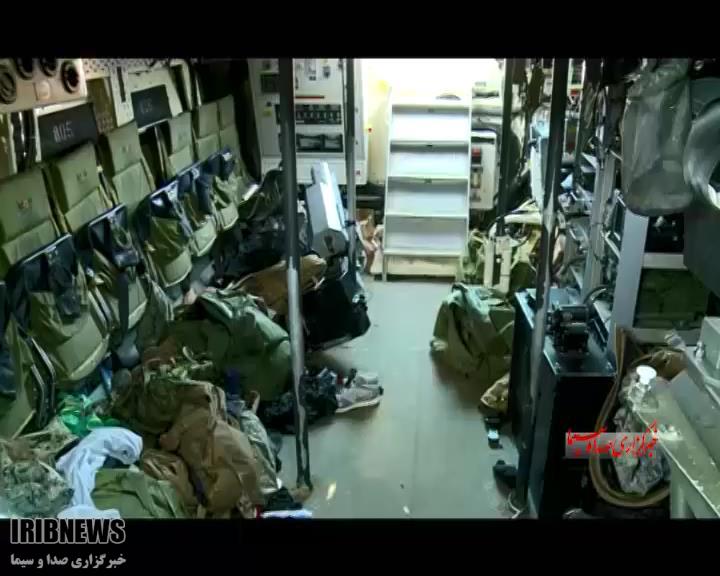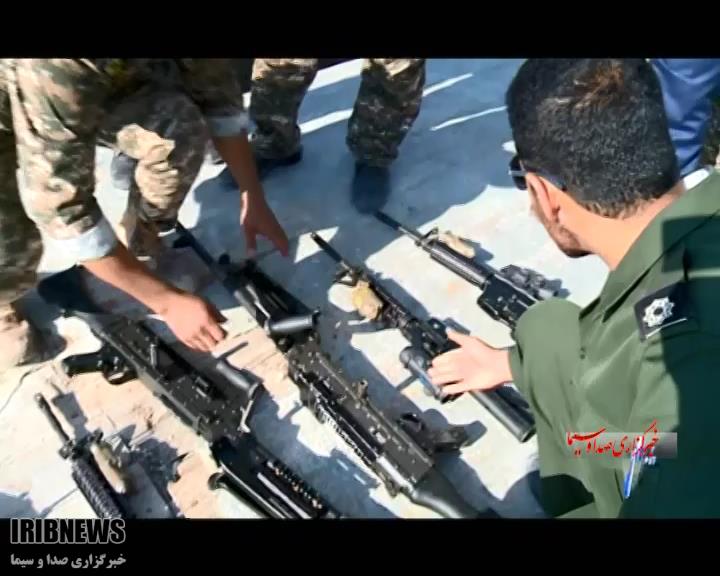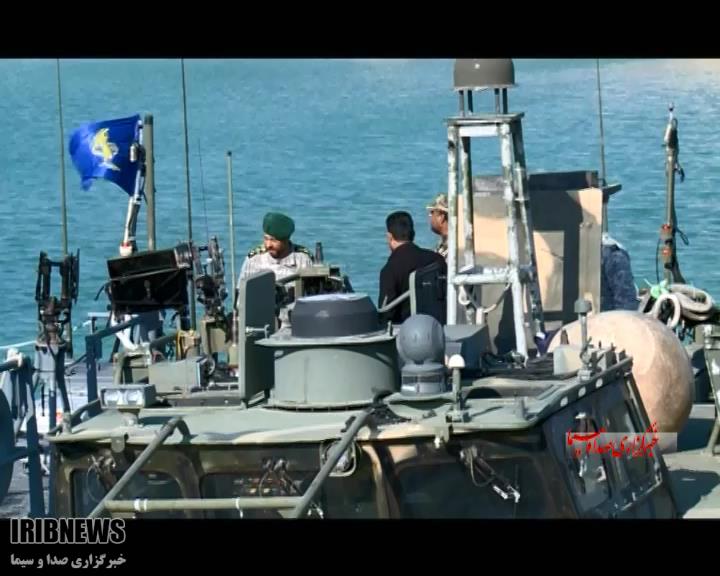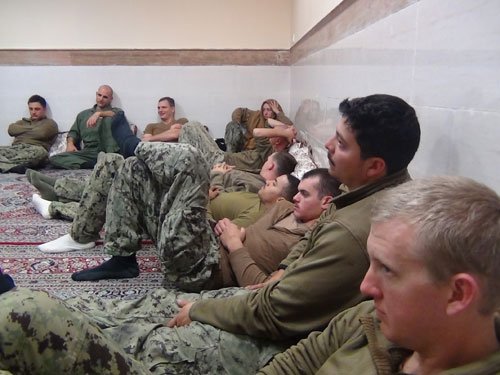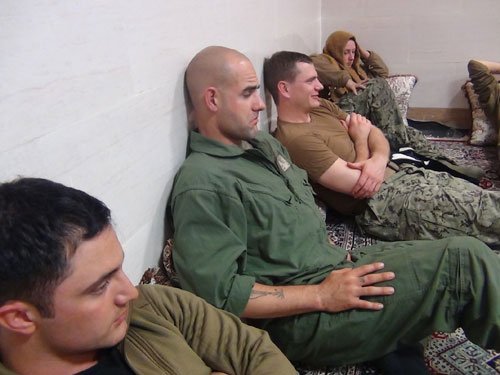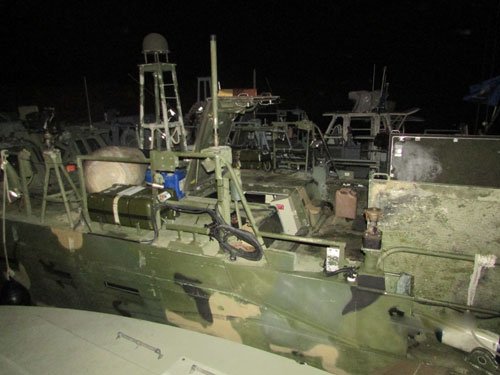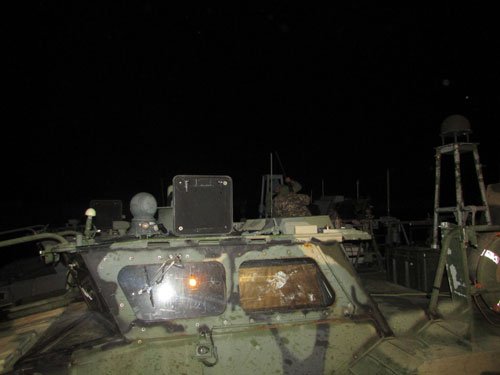WotR: The post-Arab Spring period has seen extraordinary growth in the global jihadist movement. In addition to the Islamic State seizing a vast swathe of territory spanning Syria and Iraq and al-Qaeda establishing itself as a potent military force in the Syrian civil war, instability and unfulfilled expectations in numerous countries — including Egypt, Libya, Mali, Tunisia, and Yemen — have presented jihadists with unprecedented opportunities.

But even as the jihadist movement experiences rapid growth, it has also endured unprecedented internal turmoil. The Islamic State’s emergence marks the first time that leadership over the global jihadist movement has been seriously contested. Since that group’s expulsion from the al-Qaeda network in February 2014, a fierce competition between the Islamic State and al-Qaeda has defined the militant landscape. The United States has an opportunity to exploit and aggravate fissures within the jihadist community, but to do so successfully, it is essential to understand the differences in the modus operandi of these two rival jihadist groups.
Two Models of Revolutionary Warfare
Though al-Qaeda and the Islamic State share the same ultimate goal — establishing a global caliphate ruled by an austere version of sharia (Islamic law) — each group maintains a distinct approach to revolutionary warfare. Al-Qaeda has come to favor covert expansion, unacknowledged affiliates, and a relatively quiet organizational strategy designed to carefully build a larger base of support before engaging in open warfare with its foes. By contrast, the Islamic State believes that the time for a broader military confrontation has already arrived, and has loudly disseminated its propaganda to rally as many soldiers as possible to its cause. The group combines shocking violence with an effective propaganda apparatus in an effort to quickly build its base of support.
The Maoist and focoist schools of revolutionary thought provide a useful framework for understanding these groups’ differing strategies. Al-Qaeda exhibits a revolutionary strategy that is both implicitly and explicitly based on the works of Mao Tse-tung, while the Islamic State’s approach is more consonant with the focoist writings of Ernesto “Che” Guevara and Régis Debray.
Interestingly, in 2010 Kenneth Payne published an article in Studies in Conflict & Terrorism arguing that al-Qaeda’s strategy was focoist in nature, based on a review of the group’s strategic literature and operations. Though al-Qaeda has exhibited both Maoist and focoist strands of thought, the fact that Payne’s argument was published in 2010 is significant: He wrote just on the cusp of the “Arab Spring” revolutions, which, as this article details, provided al-Qaeda the opportunity to make its Maoist-style turn that focused on the population more apparent. Ryan Evans’s argument, which was published in the CTC Sentinel the same year as Payne’s piece, has held up better over time. Evans discerned a shift in strategy between the efforts of al-Qaeda in Iraq (AQI) and the later campaign of al-Qaeda in the Arabian Peninsula (AQAP), and argued that AQAP’s more population-centric approach was forged by the group’s failures in Iraq. He noted that the shift in strategy in Yemen may herald “a larger turn for al-Qaeda globally toward a more Maoist attitude.”
Mao’s theory of revolution is rooted in the primacy of politics over warfare. In Mao’s view, a steadfast political foundation is necessary to allow guerrilla forces to create bases for logistics and operations and slowly build strength and momentum for the final conventional stage of warfare. Thus, according to Mao, before guerilla forces can initiate military action, they must first focus on “arousing and organizing the people,” and “achieving internal unification politically.” This stage is followed seamlessly by a stage of progressive expansion, followed by a third and final stage of decision — the destruction of the enemy.
Maoist revolutionaries continue to emphasize the political stage of organization and consolidation even as they pursue progressive expansion. Consistent with Maoist theory, al-Qaeda and its affiliates have focused on maintaining and expanding the group’s political support. Even in areas where al-Qaeda has engaged in open warfare, it has been somewhat restrained in its approach to civilian populations since the initiation of AQAP’s campaign in 2009 that Ryan Evans noted was a departure from the group’s Iraq model of insurgency. Thereafter, the group has adopted a phased implementation of its hardline version of sharia where it enjoys control or significant influence. The only one of al-Qaeda’s branches that explicitly did not fit this new model was AQI, which later was expelled from al-Qaeda’s network and adopted the new moniker of the Islamic State. (Al-Qaeda’s approach toward civilian populations can only be considered “restrained” in very relative terms, juxtaposed with the more oppressive and publicly violent tactics of the Islamic State, and al-Qaeda’s own previous approach.) Al-Qaeda’s adherence to a largely Maoist framework was shaped by its experience of being hunted by the United States and its allies for a decade and a half, and — as Evans argued — particularly by the defeat of its Iraqi affiliate. Al-Qaeda’s use of Maoist strategy is designed to be low-risk and to yield long-term results.
The focoist approach to revolutionary war contrasts sharply with the Maoist approach. First used successfully in Cuba in the early 1950s, focoism holds that the political foundation necessary for revolution can be crafted through violence. Guevara essentially flipped Mao’s theory by arguing that the use of violence against the state would inspire the peasants to rise up. Unlike Mao’s strategy, focoism accepts great risks in order to inspire support. The Islamic State has in many ways followed the focoist model; it believes in the power of violence to forge the political opinions of the Muslim masses. The Islamic State views al-Qaeda’s more deliberate approach as too slow. It appears happy to win today and lose tomorrow, as long as today’s win creates a large enough subject for propaganda.
This framework of Maoist versus focoist models of revolutionary warfare should not be seen as a complete explanation for either al-Qaeda or the Islamic State’s behavior. Neither group is perfectly Maoist or focoist, but using these models provides a useful paradigm for interpreting the strategic competition between the groups.

Al-Qaeda’s Population-Centric Approach
Al-Qaeda has taken advantage of two major opportunities driven by the unsuccessful revolution in Syria and the successful revolutions in Tunisia, Egypt, and Libya. The first opportunity is that the regional upheaval created a growth environment for jihadism, and al-Qaeda has established a significant presence in places where it had previously been suppressed. The second opportunity is that as al-Qaeda expanded into new areas, it perceived an opening to repair its global image that had been badly damaged by AQI. Al-Qaeda has implemented a population-centric approach to increase its base of popular support by employing gradualism and cooperation with local actors. Al-Qaeda has also made use of popular front groups in its expansion. This is intended to reduce the organization’s exposure to counterinsurgent forces, including the United States and the Middle East’s Sunni regimes, and to avoid frightening or alienating local populations.
Popular support has become essential to al-Qaeda. While the group once conceptualized itself as exclusively a vanguard movement, it has come to view itself in recent years as a popular movement that needs the support or acquiescence of the populace. This transformation had begun prior to the Arab Spring. In 2005, then al-Qaeda deputy emir Ayman al-Zawahiri explained in a letter to Abu Musab al-Zarqawi, AQI’s reckless emir, that “the strongest weapon which the mujahedeen enjoy … is popular support from the Muslim masses in Iraq, and the surrounding Muslim countries. So, we must maintain this support as best we can, and we should strive to increase it.” As previously noted, AQAP’s approach in its first year of operations reflected this paradigm. But the transformation of al-Qaeda into a more broad-based movement was supercharged by the Arab Spring, which provided a critical opening for jihadism.
In the wake of those revolutions, al-Qaeda’s senior leadership pushed hard to regain the trust and support of local populations and avoid the mistakes that marred AQI’s Iraq campaign. In an undated letter that al-Qaeda’s masul aqalim (head of regions) Atiyah Abd al-Rahman wrote to Nasir al-Wuhayshi, AQAP’s emir, he noted that “the people’s support to the mujahedin is as important as the water for fish,” referencing Mao’s famous adage that “the guerrilla must move amongst the people as a fish swims in the sea.” Wuhayshi in turn transmitted a similar message to the leadership of al-Qaeda in the Islamic Maghreb, illustrating al-Qaeda’s coordinated efforts.
The most significant example of these changes came in September 2013, when Zawahiri, who became al-Qaeda’s emir following Osama bin Laden’s death in May 2011, released a document entitled “General Guidelines for Jihad” that made public al-Qaeda’s new population-centric approach. Zawahiri instructed affiliates to avoid conflict with Middle Eastern governments when possible, asserting that conflict with local regimes would distract from efforts to build bases of support. Zawahiri also instructed affiliates to minimize violent conflict with Shia and non-Muslim populations, and to abstain from attacks that could result in Muslim civilian casualties. Consonant with these changes to al-Qaeda’s operations, the organization has also launched a “rebranding” campaign (a subject we have addressed previously at War on the Rocks) designed to present the group as a more reasonable — and perhaps controllable — alternative to the Islamic State, and as a potential bulwark against Iranian encroachment.
Al-Qaeda’s strategy of covert expansion — its use of front groups and its embrace of a relatively low-key public profile — is another critical element in the group’s post-Arab Spring approach. In a letter recovered from his Abbottabad compound, bin Laden explained the rationale for preferring a low profile. He noted that when a branch’s affiliation with al-Qaeda “becomes declared and out in the open,” the group’s enemies escalate their attacks on it.
Al-Qaeda’s efforts in Tunisia exemplified its early post-Arab Spring strategy. Its expansion was spearheaded by a front organization called Ansar al-Sharia in Tunisia (AST). Several high-profile salafi jihadists who had been released from prison when the regime of dictator Zine El Abidine Ben Ali was overthrown established the group. AST initially focused its resources on dawa (evangelism) by organizing dawa events, holding public protests, and dominating physical spaces near places of worship. AST also provided services, including food, clothing, and medical care, to impoverished communities, and developed a social media apparatus to publicize its dawa activities.
AST’s emphasis on dawa was characteristic of al-Qaeda’s early post-Arab Spring strategy. The group’s ideologues understood that they would have unprecedented opportunities to disseminate salafi jihadist ideology to the public. While the old dictators placed strict restrictions on religious expression, strategists foresaw fewer restrictions in post-autocratic environments. This strategic logic was expressed by Atiyah, who in February 2011 exhorted jihadists in post-revolutionary states to “spring into action and initiate or increase their preaching, education, reformation and revitalization in light of the freedom and opportunities now available in this post revolution era.”
As AST’s dawa gained traction, the group also began to engage in hisba violence targeting those who violated salafist religious norms. AST was initially methodical in its use of violence, striking targets such as prostitutes and establishments that served alcohol — which would be widely considered acceptable by those inclined toward religious fundamentalism. Moreover, AST refrained from claiming responsibility for these hisba attacks, creating the perception that this violence was organic to the Tunisian people. Through this approach, AST ensured that its use of violence did not cross a line that would provoke a government crackdown.
As it became more entrenched, AST eventually embraced jihadist violence, first facilitating Tunisians’ travel to foreign battlefields like Syria, Libya and Mali before eventually turning its guns against the Tunisian state. AST members were implicated in the 2013 assassinations of secularist politicians Chokri Belaïd and Mohammed Brahmi. Less than a week after Brahmi’s July 2013 death, a jihadist ambush in Jebel el-Chaambi killed eight Tunisian soldiers, five of whom had their throats slit. These bloody incidents constituted a point of no return, and in August 2013 the government designated AST a terrorist organization and cracked down on the group.
It is not clear that AST’s leadership wanted the group’s violence to escalate so quickly. Indeed, it seems the group had not progressed far enough through Mao’s stages of revolutionary warfare by July 2013 to justify the initiation of open warfare. AST gave its local branches considerable autonomy, which may have contributed to violence escalating faster than the leadership wanted or anticipated. Despite this, al-Qaeda’s blueprint for Tunisia nonetheless demonstrates how its plans for the post-Arab Spring environment followed Maoist insurgent principles.
The Islamic State’s Bold, Boisterous Growth Model
The Islamic State’s strategy for supplanting al-Qaeda centers on two techniques. First, the group sought to portray al-Qaeda’s slower and more deliberate strategy as weakness and indecisiveness. Second, the Islamic State appealed to al-Qaeda’s affiliates by emphasizing its momentum and expansion with the aim of poaching groups, members, and potential recruits. In essence, the Islamic State’s approach is the opposite of al-Qaeda’s: While al-Qaeda has sought to minimize the amount of attention it receives in order to reduce its exposure to counterinsurgents, the Islamic State constantly seeks the spotlight, and touts its victories (real or invented) at every opportunity. The Islamic State is trying to transform al-Qaeda’s strategic methods into weaknesses.
One way the Islamic State has tried to distinguish itself from al-Qaeda is its approach to governance, particularly its implementation of sharia. The Islamic State’s ability to impose governance where it enjoys military power is essential to the caliphate’s legitimacy. Following its capture of territory in Iraq and Syria, the organization quickly set up governance structures and showcased its efforts to provide social services to local populations. Rather than building public support prior to fully enforcing its austere version of sharia, the Islamic State quickly implemented hudud punishments (sharia-prescribed corporal punishment). As such, coercive violence is a major component of the Islamic State’s governance. The organization has thrown people suspected of being gay off of roofs, beheaded those it deems traitors or apostates, cut off the hands of thieves, and stoned to death women accused of adultery.
By contrast, al-Qaeda and its affiliates have chosen a slower, more methodical imposition of sharia. The group’s guidelines emphasize a somewhat pragmatic approach aimed at winning over the population. Al-Qaeda leaders have instructed affiliates to tailor the implementation of sharia to local conditions, taking into consideration local customs and religious practices, and to implement sharia flexibly in its initial phases, forgiving minor transgressions during that period. Al-Qaeda’s gradualist approach has been on display in Syria, where its affiliate Jabhat al-Nusra has repealed bans on cigarette smoking, and has made public displays of punishing fighters who unjustly harm local residents. This approach should not be mistaken for moderation on Nusra’s part — there are compelling reports of the group’s continuing extremism, especially in its treatment of religious minorities — but Nusra has done a masterful job of concealing its atrocities and maintaining its local image as a populist entity.
Al-Qaeda’s population-centric approach has been a major target of derision for the Islamic State, which accuses al-Qaeda of abandoning true Islamic principles by giving “preference to popularity and rationalization.”
Overt and Covert Expansion
Military strategy is another area where the Islamic State and al-Qaeda differ. The Islamic State employs an aggressive approach to territorial conquest. The group’s willingness to employ force-on-force warfare enabled it to take major territory quickly: Overall, this tactic has borne fruit for the organization, but has also increased the Islamic State’s rate of attrition. As the Islamic State has experienced military setbacks, it has moved toward greater use of irregular warfare, a strategic shift that illustrates the group’s capacity for adaptation.
The Islamic State’s hybrid warfare strategy does not necessarily distinguish it from al-Qaeda, which has employed similar tactics in some theaters. What makes the Islamic State unique is the way it showcases its military operations, using virtually all of them as propaganda pieces. While one function of the Islamic State’s military actions is to showcase the group’s strength, al-Qaeda has systematically sought to conceal the size of its network and downplay its capabilities. The group has masked its involvement in emerging theatres of conflict and established covert relationships with unacknowledged affiliate organizations like AST.
Consequently, many analysts underestimate al-Qaeda’s strength, and counterinsurgent forces have allowed al-Qaeda front groups to thrive in some theaters. Concealing affiliates’ relationships with al-Qaeda allows these groups to gain public support and attract resources from individuals and entities that might otherwise be wary of assisting an overt al-Qaeda entity.
Al-Qaeda’s military approach and preference for more covert activities is shaped by its patient worldview. Ostentatious, tactical victories that expose the network to attack and undermine its long-term prospects are of little value to the organization from a strategic perspective. In an article published in al-Qaeda’s online magazine Resurgence, jihadist strategist Abu Ubaydah al-Maqdisi explained the rationale behind this policy of restraint:
A guerilla force may possess the capacity of inflicting huge blows on the enemy, but it may be better for it to restrain from doing so in situations when the reaction of the enemy may be overwhelming.
Essentially, al-Qaeda’s senior leadership wants the organization to slowly develop its capabilities and resources in preparation for a longer campaign. At the same time, al-Qaeda leadership instructs its affiliates to begin destabilizing state regimes. This two-pronged strategy of enhancing its capabilities and destabilizing enemy regimes positions al-Qaeda to capitalize on state weakness and collapse in the long term.
A New Jihadist Era
The Islamic State’s rise has reshaped the global jihadist landscape, which for nearly two decades was dominated by al-Qaeda. With the Islamic State seizing the world’s attention, the age of unipolarity within the jihadist movement is over, replaced by intense internal conflict. Each group is firm in the belief that its organizational model is superior to that of its opponent.
The transnational jihadist movement is likely to be shaped in the coming years by this competition. It is essential that the United States understand the two groups’ strategies and pay close attention as their approaches continue to evolve. The United States has tremendous opportunities to exploit the cleavages between the Islamic State and al-Qaeda. But if we fail to understand the two organizations’ strengths, weaknesses, and strategic and tactical postures, the jihadist movement may emerge from this period of competition stronger than before.
Daveed Gartenstein-Ross is a senior fellow at the Foundation for Defense of Democracies (FDD) and the chief executive officer of Valens Global, a consulting firm that focuses on violent non-state actors. Nathaniel Barr is the research manager at Valens Global, where Bridget Moreng is an analyst. This article was adapted from their report (co-authored with War on the Rocks senior editor Jason Fritz) Islamic State vs. Al-Qaeda: Strategic Dimensions of a Patricidal Conflict, which was published by the New America Foundation in December 2015.


